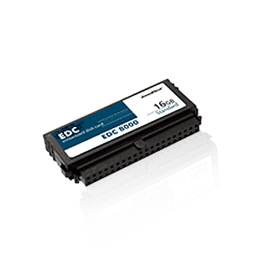
Disk on Module
Wide Temp
The Latest Generation Disk on Module with Outstanding Performance and Durability. Extremely light weight, reliable & performant, This new generation IDE Flash Module is the most flexible solution to provide reliable storage on space limited and hostile environnment. Decreasing data access time and replacing any moving part from a traditional hard drive, the Flash Disk on Module fit the needs of a wide range of application. Wide temp version -40c +85c
80MB/s Read 75MB/s Write
Fully support of PIO 0-4/Multiword DMA 0-2/Ultra DMA 0-6 modes
IDE Master/Slave select
Power Cable included
Static Wear-Leveling Function
Bad Block Management & Error-Correction Code
DOS/WinCE/Linux/WinXPe bootable
Available in 2GB to 16GB
100% Compatible with the Standard IDE ATA interface, this unit works exaclty like a standard hard drive but without any moving part, strongly increasing reliability and improving data access speed performance, without any noise.
| Model variation |
 Disk on Module 40pin Vertical Industrial Disk on Module 40pin Vertical Industrial |
 Disk on Module 40pin Vertical Wide temp Disk on Module 40pin Vertical Wide temp |
 Disk on Module 44pin Vertical Industrial Disk on Module 44pin Vertical Industrial |
 Disk on Module 44pin Vertical Wide temp Disk on Module 44pin Vertical Wide temp |
